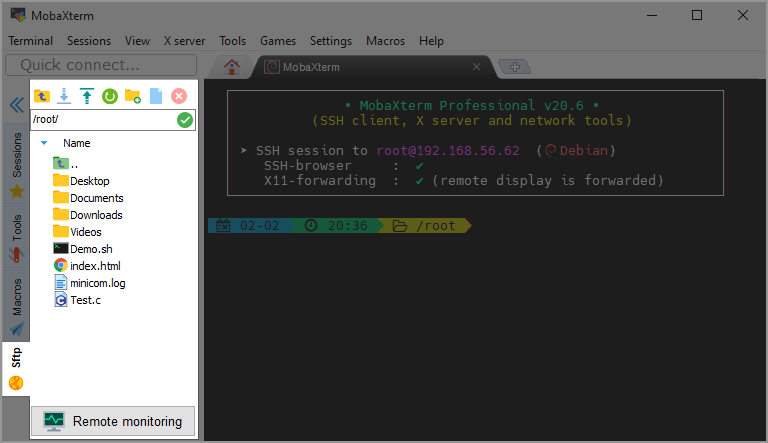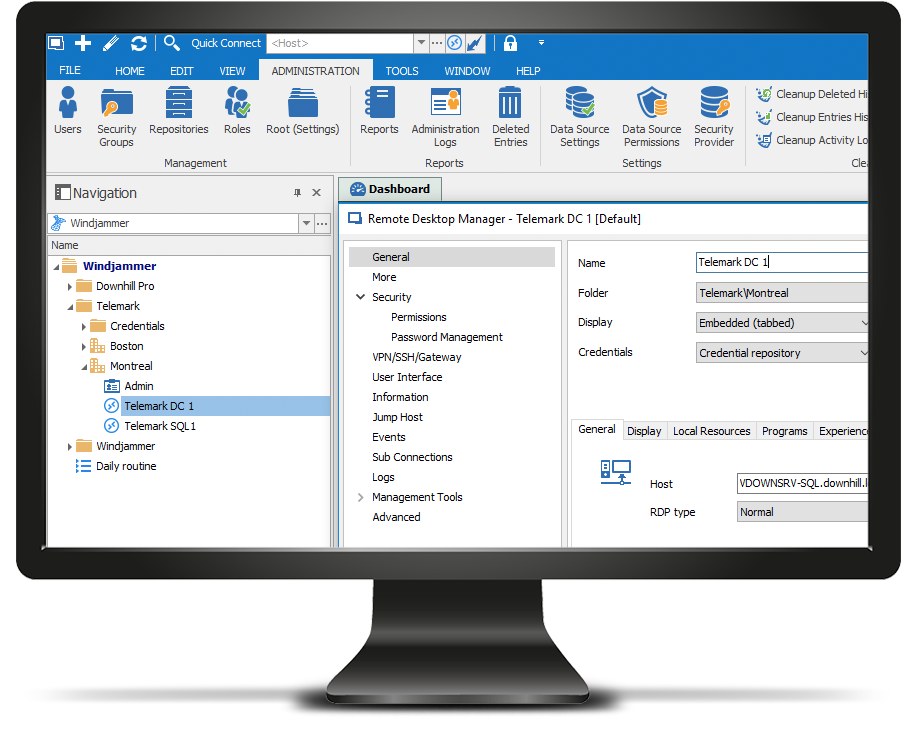- Jan 04, 2021 This wikiHow teaches you how to enable and use Remote Desktop on two Windows 7 computers. Remote Desktop is a built-in Windows 7 feature which allows you to control one computer from another over the Internet. In order to use Remote Desktop, you'll have to enable it on the target computer and find the target computer's IP address, after which.
- It is a client-server based protocol, the remote computer to access must have an RDP server running. For Embedded Windows, a client named Windows Embedded Compact Terminal Services Client (CETSC) is available that can connect to a server with Terminal Server functionality enabled.
- This guide is intended for administrators of HP thin client models that are based on the Windows® Embedded Standard 7 operating system. It is assumed that you are using the latest Windows Embedded Standard 7E or Windows Embedded Standard 7P image provided by HP and that you will be logged on as an administrator.
Xbox one controller mac download. While almost everyone in the Western world has at least one laptop or desktop in their household, it’s important to remember that a huge percentage of computing is done in an office and enterprise environment. The use-cases of home and office machines are understandably quite different — we play World of Warcraft at home, and fiddle with Word and Excel documents at work — and thus the hardware specifications are very different, too. It’s very rare to find an office machine that has more than a bare minimum of memory and processor power.

Windows Embedded Remote Desktop App
By default on a Windows Server Product Windows Remote Management (WinRM) is enabled, but Remote Desktop (RDP) is Disabled. On workstation operating systems neither is enabled by default. For instructor-led Windows Server training, see our class schedule. Enabling RDP locally.
This hasn’t historically been a problem. Office machines have been equipped with wimpy CPUs and integrated graphics solutions, and companies have saved billions of dollars as a result. Unfortunately for enterprises, though, the world of computing is changing. Unless you’ve been sleeping under a rock for the last 18 months, you will have noticed that all three major browser vendors have been racing to improve their JavaScript performance and HTML5 compliance. Along the way, hardware acceleration for 2D and 3D rendering was thrown into the mix. We’ve seen a veritable explosion in rich web apps as a result, and we’re now soundly plugging our way towards HTML5-based operating systems like Chrome OS and Windows 8.
The end result is a chain of technological innovations that is moving much, much faster than the 3- and 5-year upgrade cycles that plague most large businesses. Not only are there millions of office workers that are forced to surf and work on old, low-RAM, antique-CPU beige boxes, but more importantly they’re often forced into using ancient versions of Internet Explorer and Firefox that were released long before last year’s performance surge.

Enter Windows Thin PC, or WinTPC for short. WinTPC is the latest in the long line of Windows Embedded releases, but slightly retooled and re-branded to represent its new use-case: turning decrepit computers into thin clients. Windows Embedded Standard 7 (WES7), released last month, and Windows Thin PC, released this week, are both based on Windows 7. They look like Windows 7 (with the exception of Aero in the case of WinTPC, but more on that later), they have much the same enterprise feature set as Windows 7 (BitLocker, AppLocker, Direct Access), and most importantly they can be administered using the standard Windows backend of WSUS, Active Directory, Configuration Manager, Group Policies, and PowerShell.
The main difference is that WinTPC is a free download for anyone with a Microsoft Volume Licensing/Software Assurance license, while WES7 is only available as a pre-installed OS on thin clients from OEMs like HP.
Windows Thin PC
Windows Thin PC, in other words, is a fantastic way to revitalize Windows XP-era hardware with a fresh coat of Windows 7 paint. Additionally, WinTPC includes write filters, which provide granular control to the system hard drive, and a keyboard filter that can block various key combos. All in all, Windows Thin PC is a neat, cost-effective, and secure way of re-purposing old hardware.
But there’s more! You might have heard about RemoteFX, a new technology that debuted with Windows Server 2008 R2 and Windows 7 SP1. Basically, it allows Remote Desktop clients to use the graphics hardware on the remote server. You might be connecting from a netbook with the most awful of integrated graphics solutions, but if the remote server has a juicy graphics card, you can actually use RemoteFX to run 3D games inside a Remote Desktop connection.
Windows Xp Embedded Remote Desktop Client
Now, marry this concept of sharing out graphics hardware over a network with Windows Server 2008 R2’s Hyper-V functionality. Hyper-V is a virtualization tool that lets you run many instances of any guest OS — Windows XP, 7, Ubuntu, even Vista if you’re a masochist — on a single piece of server hardware. With Hyper-V, you can Remote Desktop into any of the guest OSes — and if the server has a real graphics card, RemoteFX grants hardware accelerated graphics to each of the guest OSes. In other words, if your Windows Server is powerful enough, you can give every worker a puny netbook — and as long as they have high-speed internet access, they’ll be able to log into a Hyper-V instance of Windows 7 and play Crysis. Seriously!
Remote Desktop Download
Read on for our hands-on experience with Windows Thin PC, benchmarks, and some pictures of WinTPC and RemoteFX in action. Download visio on mac.
- 1 of 2

